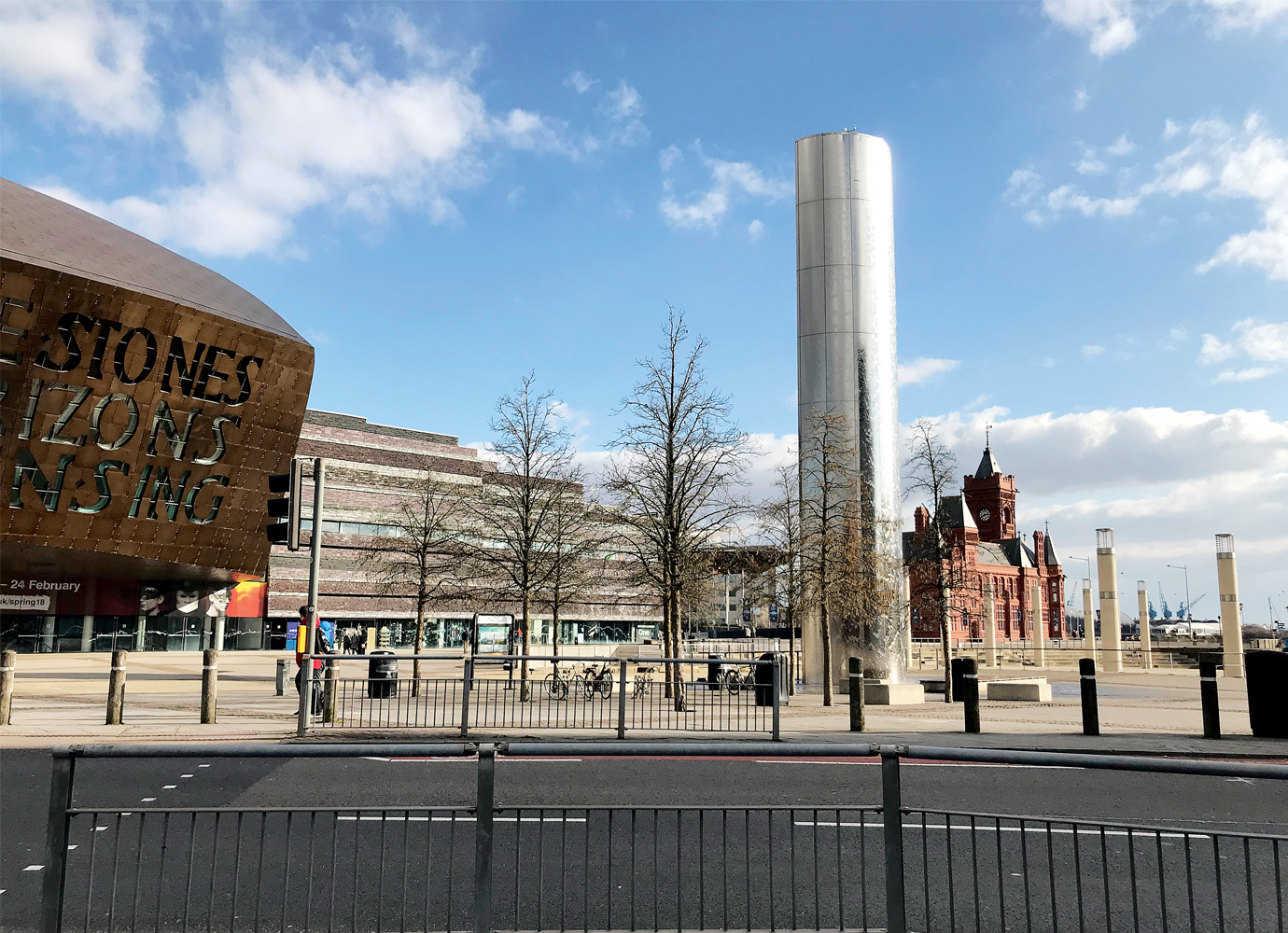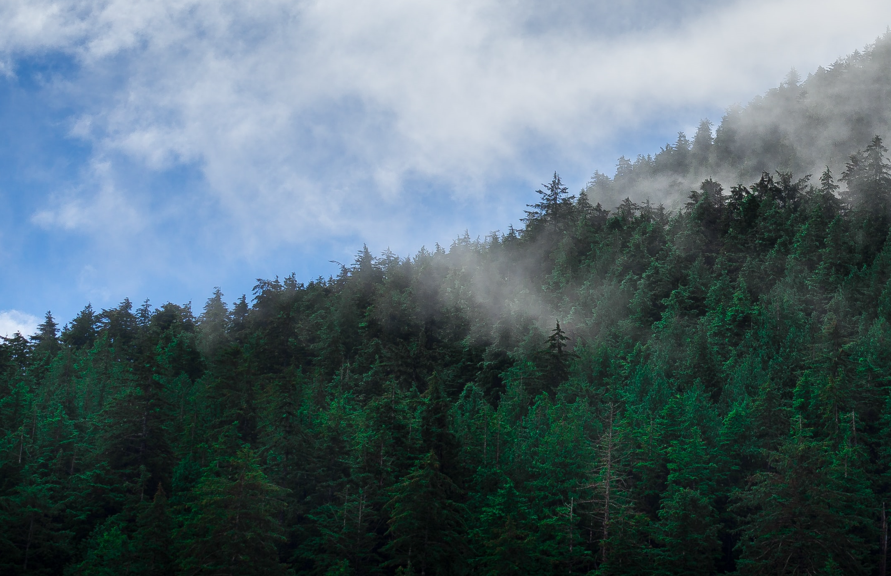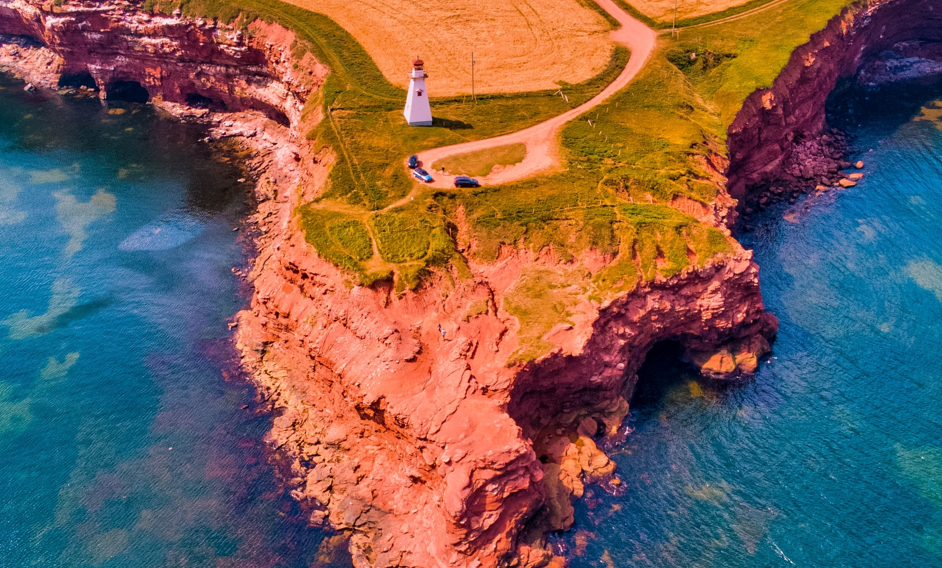Discover the richness of Cardiff and Swansea
By Lola Augustine Brown
Above: The Wales Millennium Centre for the Performing Arts, Cardiff; photo: Lola Augustine Brown
From my room on the 16th floor of the Cardiff Hilton, I could see over the walls of Cardiff Castle, where Welsh flags fluttered above the 12th-century stone keep in Cardiff’s city centre. The iconic castle had been built over a much simpler fortification constructed by Norman invaders in the 11th century, and that had been built on top of a 3rd-century Roman fort. Opening my curtains on that view every morning was pretty special, as was watching the sun set over the castle each evening.
“You can’t go too far in Wales without seeing a castle,” Mike Davies of Dragon Tours had told me. “We’ve got more castles per square mile than anywhere else in the world.” What else would you expect of a country with a dragon on its flag? Wales is steeped in a rich and often-bloody history (you don’t build fortifications like that to keep the wildlife out), but there’s so much more to the country. Exploring Cardiff and nearby Swansea, I got to share a taste of the growing food scene and explore the art and cultural experiences on offer.
Exploring the Castle
Cardiff Castle has to be the first stop on any tour of the Welsh capital. For the price of admission, you get to roam the castle grounds and take in the expansive views from the keep, the opulent Victorian Gothic-revival castle apartments, the tunnels within the walls that served as air-raid shelters for as many as 1,800 during the Second World War, and the Cardiff Castle Museum of the Welsh Soldier—the regimental museum of The Queen’s Dragoon Guards and The Royal Welsh. For a few pounds more, you can have a guided 50-minute tour of the castle apartments, which is worth every penny.
Much of the tour tells the history of the Stuart family—the Marquesses of Bute—who owned the castle from 1766 until just after the Second World War, when the family gave the property to the city. By the 19th-century, the noble family had become rich on Welsh coal—highly prized because it burned a few degrees hotter and gave ships a bit of extra speed—and by 1860, the 3rd Marquess of Bute was said to be the richest man in the world. He poured a lot of money into renovating the castle apartments, which today stand as opulent testimony to the wealth coal brought to the city. Each room has its own theme (Italian, Arabian, etc.) and is decorated with gilded carved wood, elaborate murals, stained glass, and marble. Most impressive to me was the Gentlemen’s Winter Smoking Room, located in one of the Gothic-revival towers and intricately painted with medieval hunting scenes and Greek gods.
On a guided tour with Eric Heard, the visitor host at the castle, I learned much about the Bute connection with Canada. In 1627, Sir James Stuart, who would become the 1st Marquess of Bute, was given the title of Baronet of Nova Scotia. Wandering the rooms, you see beaver motifs carved into the bookcases of the library and sitting atop the fountain in the roof garden. Heard told us that the beaver was the 3rd Marquess’s favourite animal. “His wife bought him a colony of beavers that were released in the river here but sadly didn’t survive,” he said. “There were beavers here in the Middle Ages, but they were hunted to extinction some 400 years ago.”
It was on the death of the 4th Marquess, in 1947, that the family gave the castle and its grounds to the city of Cardiff. For 25 years, it was home to the Royal Welsh College of Music & Drama—Sir Anthony Hopkins studied there—and in 1974, it opened to the public as an attraction.
Tastes of the City
The castle grounds are now known as Bute Park, and there you’ll find the Pettigrew Tea Rooms. Sian Bassett-Roberts, of Loving Welsh Food tours, took me there to try my first Welsh cakes—flat scones cooked on a griddle—and bara brith, a kind of fruit bread, which was served on vintage china. Sitting with a big pot of tea, Bassett-Roberts said, “The law with bara brith is that you have to put butter on it,” and we slathered it on. Both treats were delicious, and the tea room is a sweet little spot filled with antique furnishings.
From there, Bassett-Roberts took me to the hundred-year-old Cardiff Market (though there has been trading on the site since the 1700s) to get a taste of local life and cuisine. This is where you’ll find old-timers sitting in the market café or haggling over the price of fish, but there are also gourmet stores popping up in the old market, so it’s a fun place to try foods new and old. We were there to check out E. Ashton Fishmongers, the oldest limited company in Wales (first registered in 1800), and try the laver cake—a mixture of seaweed (laverbread), oats, and bacon that is served with cockles. Bassett-Roberts produced a couple of delicious homemade oatcakes from her purse and spread them with laverbread and cockles, telling me that I was sampling a traditional miners’ breakfast. I wouldn’t say it was the tastiest thing I’d ever eaten, but it tasted better than it looked or sounded when she described it to me.
From there we went for lunch in a bright and airy bistro and café called Milk & Sugar, which serves up Welsh specialties and more. We stopped there for a hearty bowl of cawl, a traditional lamb soup. “A lot of traditional Welsh foods are made from cheap cuts of meat that you cook for a long time, and the cuisine has always been very local because that’s all people had access to,” Bassett-Roberts explained, adding that lamb features heavily on menus in Wales: “The country has nine million sheep and three million people, and that’s what they’ve always eaten.”
Much of the signage in Milk & Sugar was in Welsh, and I heard the lilting language being spoken by several people. Bassett-Roberts explained that fluent Welsh speakers in the city proudly wear orange badges to identify them as such. She also explained the Cardiff accent by telling me, “You just add about 17 a’s to every word,” which seemed more and more to
be true the more time I spent in the city.
The Cardiff Story Museum is located in the same converted library as the café and tells the story of the city with exhibits and thousands of artifacts. Entry to the museum is free, and it’s worth a visit. The gift shop offers more upscale locally made gifts and treats, plus lots of Welsh-language cards and artwork.
After lunch, we walked back to Bute Park to take a ride down the River Taff to Cardiff Bay on the Princess Catherine water bus. We glided under old bridges past colonies of swans and other seabirds all along the banks. A guide on the boat explained that Cardiff Bay has changed from industrial docks to a trendy area full of restaurants and entertainment options. (The area was called Tiger Bay when Dame Shirley Bassey grew up there.) Cardiff Bay is now home to the Welsh National Assembly, the Wales Millennium Centre for the Performing Arts, and both recently built condos and condos in renovated historic buildings. We were there to get dessert.
Bassett-Roberts was taking me to a secret spot of hers, a restaurant in a new hotel at The Coal Exchange. “There’s so much history there, and they kept the names of the coal companies on the doors of the rooms, all of which used to be offices,” she said. There we sampled bread-and-butter pudding made with bara brith, this time with the addition of raisins soaked in rum and served with crème anglaise. It was a decadent treat.
Around the Bay
Bassett-Roberts next took me to tour the architecturally splendid Senedd (Senate), also known as the National Assembly Building, which everyone is welcome to enter for free (after you clear a security check). We were there for a free tour, but you can come in simply to have a cup of tea in the café and admire the architecture.
Opened by the Queen in 2006, the Senedd is all glass, with a huge steel room and a wooden ceiling that looks from below like waves or perhaps the bottom of a boat. The wood is red cedar from British Columbia. Through the glass floor, you can see down into the Siambr (Chamber), where the Welsh Assembly meets.
Our guide explained that every glass-walled meeting room is designed with accountability and public access in mind. There is no privacy for Welsh politicians. As a result, we learned, one was caught playing the Candy Crush game on his smartphone during a sitting of the Assembly and ordered by the presiding speaker to leave and come back only when he felt he could give his full attention to the people of Wales.
Next to the Senedd is the Wales Millennium Centre for the Performing Arts, should you wish to take in a show or opera performance. Fans of the Dr. Who spinoff Torchwood will recognize the reflective water tower outside the building as the entrance to the Torchwood Hub (and as a consequence, you’ll see many people there photographing the spot). Just around the bay is the quaint Norwegian Church where Roald Dahl was christened, which now serves as a museum and cultural centre with a small café.
A Modern Old City
The Cardiff Hilton makes a great base for exploring, as you’re in the middle of the city centre when you stay there. I was lucky enough to be given an executive room, which allowed me access to the hotel’s executive lounge, where food and drinks were available from morning until late night. It was the perfect space to sit and enjoy breakfast with a newspaper and that great view out over the castle.
If you like to shop, you’ll love Cardiff, which is becoming known as one of the UK’s top destinations to blow your money on clothes and fripperies. There you’ll find most major brands in huge new malls or along the pedestrianized streets in renovated historic buildings. You can wander Cardiff’s five Victorian arcades to find independent boutiques, record stores, restaurants, barbershops, and weird and wonderful retailers. The arcades were built when Cardiff was rolling in money, and all the shiny new stores are a testament to the new growth in the city.
Walking through the wide promenades of the busy city centre, I found that the old and new meshed well together. One thing I didn’t expect to see were Tim Hortons restaurants—I spotted three within a few blocks of my hotel. I resisted the urge to go in and ask for a double-double to see if the staff there would know what I was talking about.
On my last evening in Cardiff, I ate a superb meal at Chapel 1877, which is housed in a converted Methodist church with many of the original features (including the pulpit) preserved. Tucking into leek-and-potato soup drizzled with truffle oil and duck breast on a bed of red cabbage was a great way to end what had been a fabulous foodie few days in the city.
Searching for Poetry in Swansea
I spent my last day in Wales with Dylan Thomas, or rather, exploring Swansea, the city where he lived and that inspired so much of his writing. I’d arranged to spend the day with Mike Davies of Dragon Tours, a historian and excellent guide, who picked me up at my hotel in Cardiff and drove us the hour west to Swansea, pointing out castles along the way.
Our first stop once we got there was the Dylan Thomas Centre, a museum and literary-events space. The centre’s “Love the Words” exhibit tells the story of Thomas’s life through interactive displays and artifacts, and gives fascinating insight into the driving forces in his life, the scandals, the booze, and the huge body of work he produced. The exhibit’s title comes from the instruction Thomas gave actors in New York, because in order to read his words, that’s exactly what they needed to do.
Over a cuppa in the centre’s café, I listened to Davies, fascinated, as he told me stories of an almost forgotten Welsh king about whom he’d written a book. Before we left, I picked up a few postcards and books from the gift store, which has all of Thomas’s works, as well as biographies and studies of the author.
From there we drove out through Swansea, stopping in Cwmdonkin Park, where Thomas played as a child. The Victorian gardens underwent extensive renovations in 2013 in celebration of the 100th anniversary of Thomas’s birth, and there’s a 1930s-style tea room you can visit. Driving farther, we went out to the long sandy beach at Langland Bay, stopping for lunch at a beachfront café. It was there that Dylan Thomas romanced his first proper girlfriend and actress Catherine Zeta-Jones grew up playing on the sands.
Then it was back to Swansea, because we had an appointment to keep at the lovingly restored birthplace of Dylan Thomas, 5 Cwmdonkin Drive.
This Edwardian home is where Thomas wrote two-thirds of his works, “because much of his writing was done between the ages of 15 and 19, and then he mined from that for the rest of his life,” explained Geoff Haden, the owner and restorer of the house. Sitting in the parlour with Haden, you could be right back in the days of Thomas’s family living there, in the house he brought to life in A Child’s Christmas in Wales.
The restoration is so perfect and lovingly done that you would never know from looking that when Haden bought the house, it was student accommodations, with most of the original features long trashed and little to indicate how it would have looked a hundred years before. Haden scoured everything that Thomas had ever written about 5 Cwmdonkin Drive to find clues, and also managed to find a woman who’d been the family’s maid at the house when she was 15 and who was able to give him vivid descriptions.
In addition to tours, you can arrange to stay in the house or have a small gathering there. A young writer had just checked out before we arrived—seeking inspiration, she’d wanted to stay in Dylan Thomas’s boyhood bedroom.
It was too soon time to go, and Davies dropped me off at Swansea station, where I’d begin my train journey through the green and pleasant Welsh and then English countryside back to Heathrow. My bags stuffed with Dylan Thomas memorabilia and Bassett-Roberts’s oatcake recipe, I was taking a little of Wales home with me.





